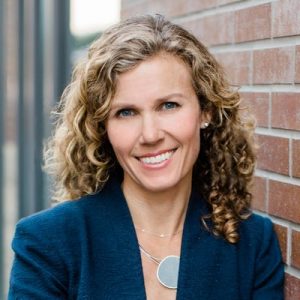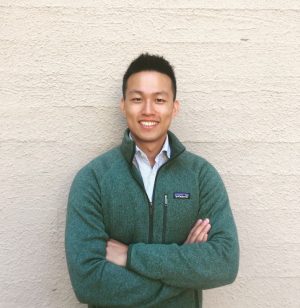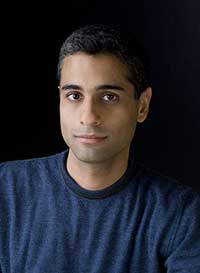
Lynelle Cameron (Haas MBA ’01) has over 20 years of experience helping companies capitalize on market opportunities related to sustainability and climate change. Cameron is currently Vice President of Sustainability at Autodesk and CEO of the Autodesk Foundation. She leads a team transforming the design, manufacturing, and construction industries to capitalize on the business opportunities of a low-carbon economy.
Under her leadership, Autodesk has won numerous awards for sustainability, climate leadership, and philanthropy. Through the Autodesk Foundation, Cameron has invested over $15 million in entrepreneurs and innovators who are designing a sustainable world for billions of people. Cameron is proving that companies can do well by doing good—in ways that strengthen brand reputation, recruit and retain the next generation of employees, and deliver financial results to shareholders.
She sat down with the Blum Center to talk about sustainability, global challenges, and 21st century skills.
How has your perspective on sustainability evolved during your tenure at Autodesk?
Surprisingly, my perspective on sustainability has remained remarkably consistent over the years. As I wrote in a California Management Review article back in 2001 (vol 43, no. 3 Spring 2001), “Sustainability has become a strategic imperative for all businesses in the 21st century. It has become a fundamental market force affecting long-term financial viability and success.” This is as true today as it was back then.
My understanding, however, of what it would take to get the private sector toshare this view and to embrace the business opportunity that sustainability provides, has definitely evolved. I thought by now sustainability would be regarded in the way quality is—table stakes for every business everywhere. And yet, with each passing year, the stakes become higher and the urgency greater.
When I started leading sustainability teams at HP and later at Autodesk, sustainability was barely viewed as a thought leadership opportunity, much less a business driver. Over the years, this has slowly started to change. Companies like Autodesk are reporting about sustainability and climate change in their 10-Ks, embracing the UN sustainable development goals and setting bold targets, setting up board committees on sustainability, and tying executive compensation to sustainability performance. Employees are voting with their feet—joining companies or leaving them based on sustainability performance. This is all progress worth celebrating. And yet, we are far from where we need to be as a global business community.
What are the skills needed for 21st-century changemakers? How can universities best enable those skills?
In a book called 21 Lessons for the 21st Century, Yuval Harare talks about the four Cs that will be needed to succeed in the age of automation: critical thinking, creativity, communication, and collaboration. As automation technology increasingly handles certain tasks, these distinctly human skills are vital. But there’s a fifth one that needs to be added: courage. Courage to look into the future and be honest about what we are up against. Courage to talk about climate change even when people don’t want to talk about it. Courage to be a leader willing to take risks and listen to crazy or unpopular ideas, wherever they may come from.
I am fortunate to have had mentors, advocates, and allies at every stage of my career propelling me forward and boosting my confidence despite the obstacles in my way. During my time at Haas, I benefited from an environment where ideas are explored and nurtured. As a student, I had a professor who agreed to oversee an independent study to develop a business plan for the Center for Responsible Business, which is celebrating its 15th anniversary this year. To pay it forward, I try to pay extra attention to other nascent ideas, and create conditions for them to take root—just as others did for me.
Universities have a vital role to play in nurturing both people and ideas and equipping the next generation with the adaptability, resilience, and stamina to make the world a better place for billions of people.
At the Blum Center, we have documented that when university-based engineering projects are geared to social impact, more women and underrepresented minorities get involved. Have you seen similar trends at the Autodesk Foundation or elsewhere?
Yes, your findings are consistent with my experience at Autodesk. As an example, the Autodesk Foundation has more than 40 organizations in our portfolio and close to 50 percent of them are led by women or have a woman on the founding team. These leaders bring deep sector knowledge across a broad spectrum of industries—from emerging technologies like AI and robotics, to the architecture, construction, and manufacturing fields.
Similarly, we offer an internship program that matches students who have design and engineering expertise with impact-driven organizations in our portfolio. In our most recent cohort of interns, more than 80 percent were women or minorities. Women seem to be drawn to deliver positive impact to the world and pursue careers that allow them to do so.
In contrast, only 9 percent of the construction workforce is female, and a recent study of the top 100 architecture firms showed that only three were led by women. As more companies recognize the opportunity to align their business with solving important global challenges, I believe women will be drawn to the field and recognize engineering and related industries as wildly impactful career paths.
What are some of the most impressive impact design projects you’ve seen in recent years?
This is always a tough question because these days there are many people using their talents and skills to create positive impact. The first that comes to mind is WeRobotics. They’re using robots and drones to deliver snake anti-venom to remote villages or to drop sterile mosquito nets in the rainforest to fight Zika. They also train students on robotics and are inspiring young leaders to solve important problems while giving them employable skills.
Build Change is another one. They are adopting the latest technologies to design and build disaster-resistant homes and schools. Not only are they rebuilding after disasters like the 2015 earthquake in Nepal, but they are also working quickly to prevent future disasters by working with local communities to improve building codes in disaster prone regions of the world. Their teams of designers and architects are using VR and automation to dramatically speed up their ability to retrofit homes and help communities prepare for when disaster strikes.
Every organization in our investment portfolio from Village Capital to Kenya Climate Innovation Center is creating positive impact; I invite you to learn more about them at www.autodesk.org.
For students interested in infrastructure, architectural, and engineering software and the built planet what are the bright spots of the future? What do they have to look forward to?
Despite the global challenges we face, and the increasing urgency of these challenges, I remain an optimist. I am confident that as humans we can and will solve today’s challenges, although it will take a radically different approach than what we’ve used to date. When we look out into the future, we see that in 2050 there will be 10 billion people on Earth, with most living in cities and more than half enjoying middle-class lifestyles. It will require twice as much energy to power these lifestyles. While this is daunting, it is also the most important design challenge of our time.
And the good news is that I believe we have the technology today—with ever-increasing levels of automation and machine intelligence, to provide humans with the knowledge to design and make more things for more people. With sophisticated automation technology, we can now handle complex systems to design and make everything better and with a lot less negative impact on the planet. With computers now as our design partners, we have collaborative intelligence that will be necessary to change the trajectory we are on.
But it will take a new mindset—one overflowing with courage, creativity, and critical thinking to leverage automation technology in a way that ensures we design a better future for billions of people.
-Tamara Straus






